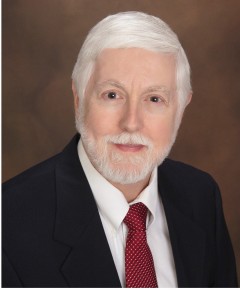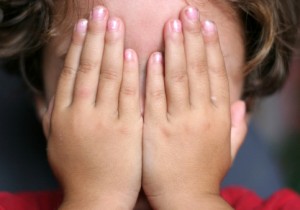Too many studies break no ground by confirming ideas that seem obvious. Now science is supposed to work by carefully examining possibilities and demonstrating whether what is hypothesized is or isn’t actually true. Unfortunately, not all studies are science.
Let’s look at one published June 8 in Pediatrics, “Violence From Weapons Affects One in Four Kids”, by Kimberly J. Mitchell, PhD et al from the University of New Hampshire, funded by the Office of Juvenile Justice and Delinquency Prevention and the Centers for Disease Control and Prevention (CDCP).
This is a perfect example of how data get recruited to support pre-existing bias, and how conclusions trump analysis in the “public-health approach to gun violence” meme endemic among medical researchers. Children (ages 2 through 17) who have witnessed or been victims of assaults “with a weapon of some sort” are more traumatized the more violent the experience is (i.e., by knives or guns, more than by sticks, rocks, bottles, tools, broken glass, metal or brass knuckles). (As a reality check, according to the CDCP’s WISQARS database, firearms aren’t even one of the top 10 causes of injury, all unintentional, for this age range.) They didn’t seem to address fists and feet, the most frequent weapons of domestic abuse, which children are much more likely to witness than street violence. We don’t know whether baseball bats fell into the “sticks” category. But, so far so true. However, I’d categorize trauma’s hypothetical effects by the degree of violence and the outcome of the assault, whether with or without “a weapon”.
The authors raise some valid ideas. “Firearm fascination, acquisition, and carrying may be a response among highly exposed children and youth, which may in turn aggravate the cycle. Adopting the symbols, style and/or behavior of an aggressor (“identification with the aggressor”) is a psychological defense against fear and vulnerability. (Think of Patty Hearst kidnapped by and then behaving as an SLA terrorist, and the Stockholm syndrome.) To their credit, they also note that “Positive firearm experiences, on the other hand, for some youth may moderate or buffer the effects of victimization exposure.” There is passing reference to “youth exposed to gangs” being “twice as likely as likely as those who are not to report weapon-involved victimization.” But there is no further attention to that or other important cultural determinants.
Of course, their ultimate recommendation is that “Further work on improving gun safety practices and taking steps to reduce children’s exposure to weapon-involved violence is warranted to reduce this prevalent problem”. (“Further research” is always recommended so that authors don’t get caught claiming certainty, however authoritative they’d like to appear.) Although the focus of the study is on post-traumatic psychological effects on individuals that result from violent episodes, there is no discussion of what to do to help them. Other MedPage Today news that is more relevant to useful intervention includes “Kids’ Behavior Better with End to Spousal Abuse”, from JAMA Pediatrics in 2013.
In an article regarding her work, “Mitchell said that her team has a grant proposal out for the development of a firearm weapon risk assessment and safety instrument, as well as looking at gun safety practices in the homes of children raised around guns.” So their next step is to assess families’ firearms management, not examining broader questions of the effects of violence on children in which firearms play a part. Defining “children raised around guns” as the next focus for intervention against their becoming traumatized by violent experiences makes clear the anti-gun axe being ground. There will be much confusion of legal and illegal gun possession and use in events that traumatize children. And this should be considered in the context of decreasing overall and gun-related homicides and statistically negligible firearms related accidental deaths (see #2 and #5 in “Debunking Mother Jones’ ’10 Pro-Gun Myths, Shot Down’”).
This is part and parcel of widespread academic intent to identify the existence of guns as a societal evil to be controlled or even purged as far as possible. Expect more of this to come, and not just because of the general anti-gun bias being marketed (e.g., by David Hemenway, fairly criticized by John Lott here). Efforts to push the CDCP back into anti-gun promotion carry on, with ever-present irrational appeals to emotion about the evils of gun possession per se.
Work published in 1994 on Urban Delinquency and Substance Abuse, from the Rochester Youth Development Study and the Department of Justice’s Office of Juvenile Justice and Delinquency Prevention, already answered the core questions about the effects of childhood acquaintance with guns. This is worth quoting at some length:
By the ninth and tenth grades, more boys own illegal guns (7 percent) than own legal guns (3 percent). Of the boys who own illegal guns, about half of the whites and African-Americans and nearly 90 percent of the Hispanics carry them on a regular basis.
[There is] a very strong relationship between owning illegal guns and delinquency and drug use. Seventy-four percent of the illegal gunowners commit street crimes, 24 percent commit gun crimes, and 41 percent use drugs. Boys who own legal firearms, however, have much lower rates of delinquency and drug use and are even slightly less delinquent than nonowners of guns. [My emphasis.] The socialization into gun ownership is also vastly different for legal and illegal gunowners. Those who own legal guns have fathers who own guns for sport and hunting. On the other hand, those who own illegal guns have friends who own illegal guns and are far more likely to be gang members. For legal gunowners, socialization appears to take place in the family; for illegal gunowners, it appears to take place “on the street.”
Guns, and being “raised around guns” aren’t the issues. What matters far more is what children are taught, what they experience, and how they are nurtured when tragedies strike.

— DRGO editor Robert B. Young, MD is a psychiatrist practicing in Pittsford, NY, an associate clinical professor at the University of Rochester School of Medicine, and a Distinguished Life Fellow of the American Psychiatric Association.

